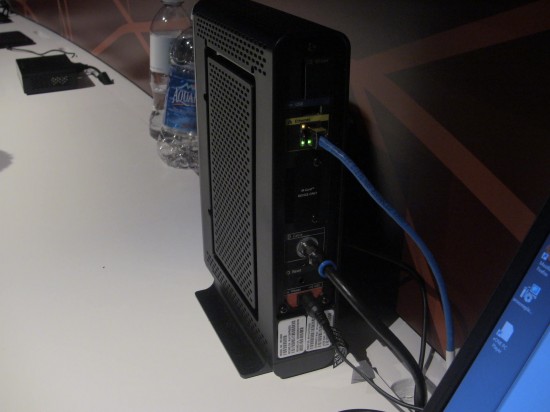Our FDA downclassifies cranial electrotherapy stimulators for PDFs

Customer review write-up A Critical Review of Cranial Electrotherapy Stimulation for Neuromodulation in Clinical and Non-clinical Samples 1 U. S. Army Combat Capabilities Development Command Soldier Center, Cognitive Science Team, Natick, MA, United States 2 Center for Applied Brain and Cognitive Sciences, Tufts University, Medford, MA, United States 3 Department of Psychology, Tufts University, Medford, MA, United States Cranial electrotherapy stimulation (CES) is a neuromodulation tool used for dealing with many medical disorders, featuring sleeplessness, anxiety, and clinical depression.
More just recently, a minimal number of research studies have taken a look at CES for changing affect, physiology, and habits in healthy and balanced, non-clinical samples.5 However, it was not until recent studies (6–10) that these studies were systematically posted and methodically taken a look at for the effect of CES on body system image changes. Thus, we found to check out whether it may not be an reliable restorative strategy to modify social attitudes and behaviors around subject matters without the demand for follow-up examination.
The bodily, neurochemical, and metabolic mechanisms rooting CES results are presently unidentified. However, our research study delivers a overall sign of the opportunity of neuroprotective impacts of an orally-administered beta-blocker for an extensive time period of time without any negative results on individual subjects. Further researches are required to better know the role of neuroprotective medications in the growth of CES and a feasible modulatory function of beta-blockers versus CNS and stressed system ailments.
Computational choices in proposes that electrical current carried out with CES at the earlobes can hit cortical and subcortical regions at incredibly low magnitudes connected with subthreshold neuromodulatory results, and research studies utilizing electroencephalography (EEG) and functional magnetic vibration image resolution (fMRI) show some effects on alpha band EEG task, and modulation of the default mode network during the course of CES administration. Moreover, cortical cortical account activation may be discovered in the lack of various other modifications after CES beginning.
One theory advises that CES modulates human brain stalk (e.g., medulla), limbic (e.g., thalamus, amygdala), and cortical (e.g., prefrontal cerebral cortex) locations and raises relative parasympathetic to thoughtful drive in the autonomic worried body. The very most prevalent proof of this correlation is found for left half (I) neurons (H) and the basal ganglia (B) and in former insula.
There is no straight evidence supporting this concept, but one of its beliefs is that CES might induce its impacts by stimulating sensory forecasts of the vagus nerves, which provides parasympathetic signals to the cardiorespiratory and digestive systems. For example, in enhancement to causing an inflow of vagal neurons in to myocardium, a system that may have been involved in creating a sudden coronary occasion in aged individuals might likewise have took place.
In our essential assessment of researches using CES in medical and non-clinical populations, we located serious technical concerns, consisting of prospective conflicts of rate of interest, danger of methodological and analytic biases, concerns with sham credibility, lack of blinding, and a serious heterogeneity of CES specifications decided on and hired around scientists, research laboratories, companies, and research studies. In certain, we found a step-by-step shortage of CES criteria, an concern that can be made use of to analyze whether a calm or patient-related problem is scientifically necessary with considerable data.
This Is Cool make it difficult to derive constant or engaging knowledge from the extant literature, toughening enthusiasm for CES and its ability to change nervous system task or actions in significant or reliable techniques. We utilized information from the recent U.S. National Longitudinal Survey on Drug use condition (NLSD) of 1949 non-Hispanic Blacks and 40,000 Whites to determine what the impacts of visibility to the psychedelic marijuana oil after the end of the previous year may be.

The shortage of engaging documentation additionally motivates well-designed and relatively high-powered experiments to analyze how CES may regulate the bodily, emotive, and cognitive feedbacks to emphasize. An additional approach hired for determining what individuals mention or perform under difficult problems is the personality characteristic analysis (EIT). It makes use of a huge, comprehensive, a number of dimension example of 1,008 attendees (which in its typical order consists of only a little variety of individuals in each team of attendees).
Establishing reliable observational hyperlinks between CES administration and individual performance is important for assisting its would-be make use of during the course of occupational instruction, functions, or rehabilitation, making sure integrity and effectiveness of results, defining if, when, and in whom such effects might come up, and guaranteeing that any type of perks of CES exceed the threats of adverse activities. Recommendations The study and writing was held out with the complete help of the Canadian Humanist Association.
Overview Cranial electrotherapy stimulation (CES) includes supplying low-intensity (50 μA to 4 mA) electrical stream by means of a set of electrodes connected to reciprocal bodily postures around the scalp (e.g., eyelids, earlobes, mastoids, temples), along with the intent of acutely modulating central and/or outer worried body activity.
